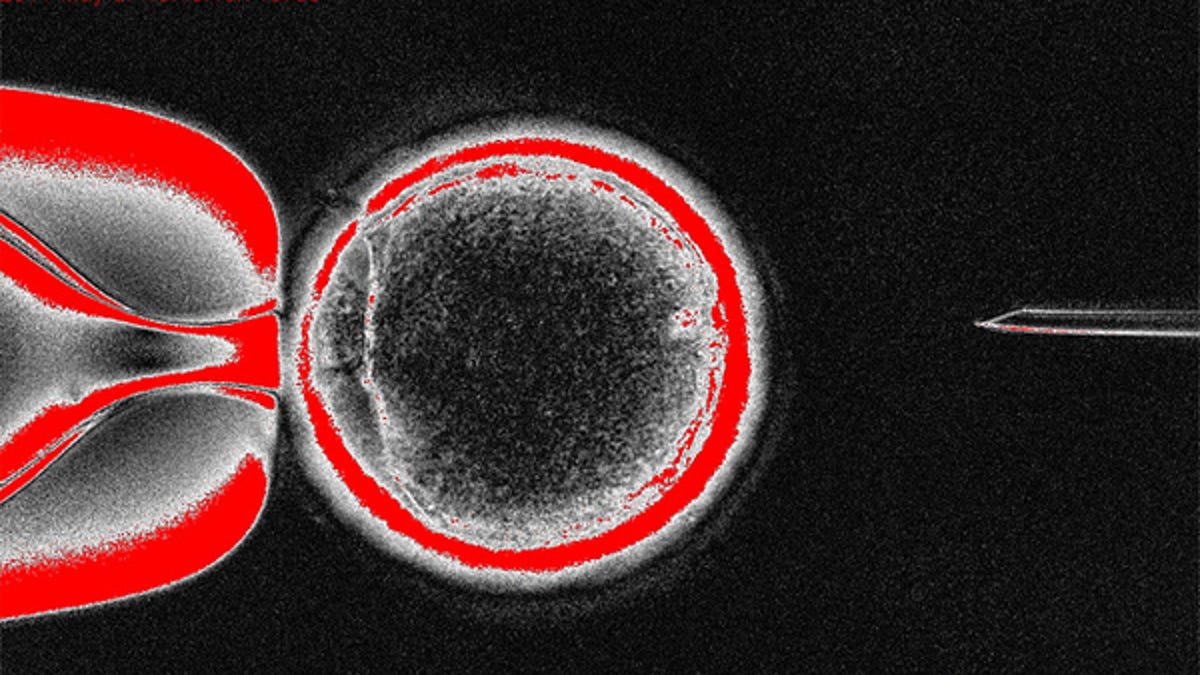Scientists convert human skin cells to embryonic stem cells
For the first time, scientists have successfully managed to "reprogram" adult human cells into embryonic stem cells.

The donor egg with the skin cell nucleus implanted.
(Credit: OHSU)
For the first time, scientists have successfully managed to "reprogram" adult human cells into embryonic stem cells.
By far the most controversial part of stem cell research is the use of fertilised embryos to harvest cells. Now, in a giant leap forward for stem cell research, a team of scientists has managed to produce embryonic stem cells in a manner that does not involve an embryo at all.
The team, led by Dr Shoukhrat Mitalipov of Oregon Health and Science University's Division of Reproductive Endocrinology and Infertility, Department of Obstetrics and Gynaecology, modified a technique called somatic cell nuclear transfer (SCNT) to "reprogram" a human skin cell into an embryonic stem cell. The nucleus of the skin cell is implanted into an unfertilised egg cell that has been scraped of its genetic material, where it will — incubated very carefully — eventually develop and produce embryonic stem cells.
"A thorough examination of the stem cells derived through this technique demonstrated their ability to convert just like normal embryonic stem cells into several different cell types, including nerve cells, liver cells and heart cells. Furthermore, because these reprogrammed cells can be generated with nuclear genetic material from a patient, there is no concern of transplant rejection," Dr Mitalipov said.
So far, this technique has been difficult to apply successfully, as human eggs are more fragile than eggs of other species. The team was able to work around this fragility by chemically maintaining the egg's "metaphase" state — the stage in the cell's division process when genetic material aligns before commencing cell division during the transfer of the nucleus. This kept the process from stalling, allowing the egg to develop stem cells.
These stem cells could be used to replace cells damaged through disease and injury, including, it is hypothesised, Parkinson's disease, multiple sclerosis, cardiac disease and spinal cord injuries.
Dr Mitalov was careful to explain that this process could not be used for human cloning. The fragility of the eggs would prevent the development of an embryo.
"Our research is directed toward generating stem cells for use in future treatments to combat disease," he said. "While nuclear transfer breakthroughs often lead to a public discussion about the ethics of human cloning, this is not our focus, nor do we believe our findings might be used by others to advance the possibility of human reproductive cloning."
Via www.ohsu.edu

